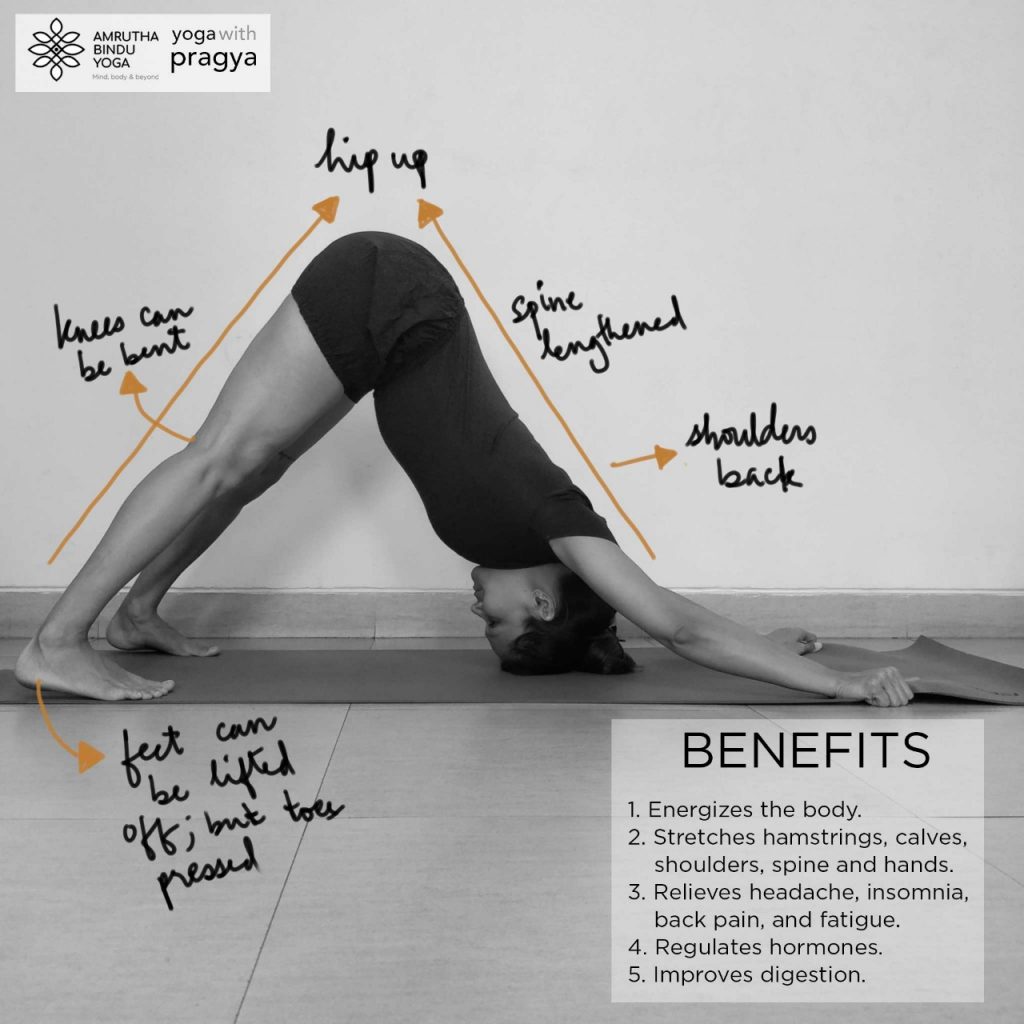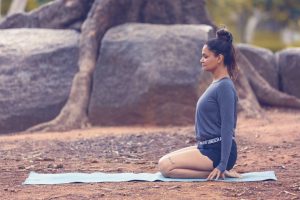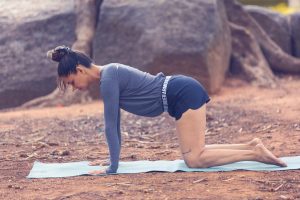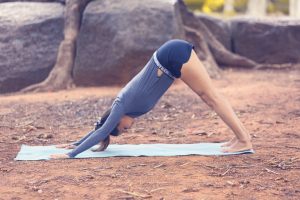I’ve written about the importance of transitions in a previous blog. The up dog to down dog transition is perhaps one of the most famous transitions in the yoga practice.
In taking care of the spine it is also important to perform dynamic movements. Although the spine supports the body, it also needs support from other muscles to work optimally. If your abdominal muscles and sides are weak, the load of the entire torso is borne by your spine and this leads to compression of the back and back pain. This eventually leads to disc bulges, slipped disc etc.
Back pain can be prevented by keeping the spine supple and flexible. Moving the spine from a concave to convex position i.e curving it in and out – is an excellent way to keep the vertebrae well conditioned and strong.
Adhomukha Svanasana
Adhomukha means face downward in Sanskrit. Svana means dog. There are many different ways of practicing this posture. Sometimes with heels lifted up, other times with the toes lifted. Sometimes with feet together, sometimes wide apart. Sometimes with heels against a wall, sometimes with the hands against the wall. Each variation has its own distinct benefit.
Benefits of Adhomukha Svanasana
- Provides great relaxation to the body and mind.
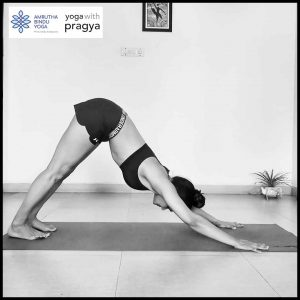
- Makes the shoulders and shoulder blades more flexible.
- Great to tone and strengthen the legs.
- Rejuvenates the entire body.
- Stimulates blood flow to the brain and helps to relieve anxiety and depression.
- Reduces lower backache.
It is advisable not to hold this posture for long periods of time when you are menstruating. However, those with heavy and uncomfortable menses will benefit greatly by practicing this posture between their cycles.
Urdhvamukha Svanasana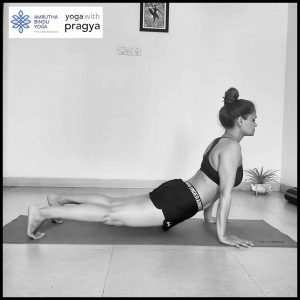
Benefits of Urdhvamukha Svanasana
- Great to ease a stiff neck.
- Rejuvenates the spine.
- Great for those with sciatica, slipped or prolapsed discs.
- Strengthens the spine.
- Expands the chest, so enables better breathing.
- Keeps the pelvic region healthy.
[Practice Tip] For beginners to yoga this posture is a challenge. Most of us tend to collapse the shoulders and chest, and this puts a lot of strain on the shoulders and neck. To prevent this, push your hands more strongly into the floor, making sure your fingers are spread wide apart. Then elevate the chest up and forward.
Watch this video to understand the finer points of this transition.
Participate in our Work From Home Challenge this entire month and win a giveaway at the end of the challenge. Download our practice tracker and asana sequence below:
[ddownload id=”8554″] Practice Tracker
[ddownload id=”8549″] Yoga Sequence
For more information go to:
Medha Bhaskar: https://www.instagram.com/medha.bhaskar/
Amrutha Bindu Yoga: https://www.amruthabindu.com/
Pragya Bhatt: https://www.instagram.com/yogawithpragya/
